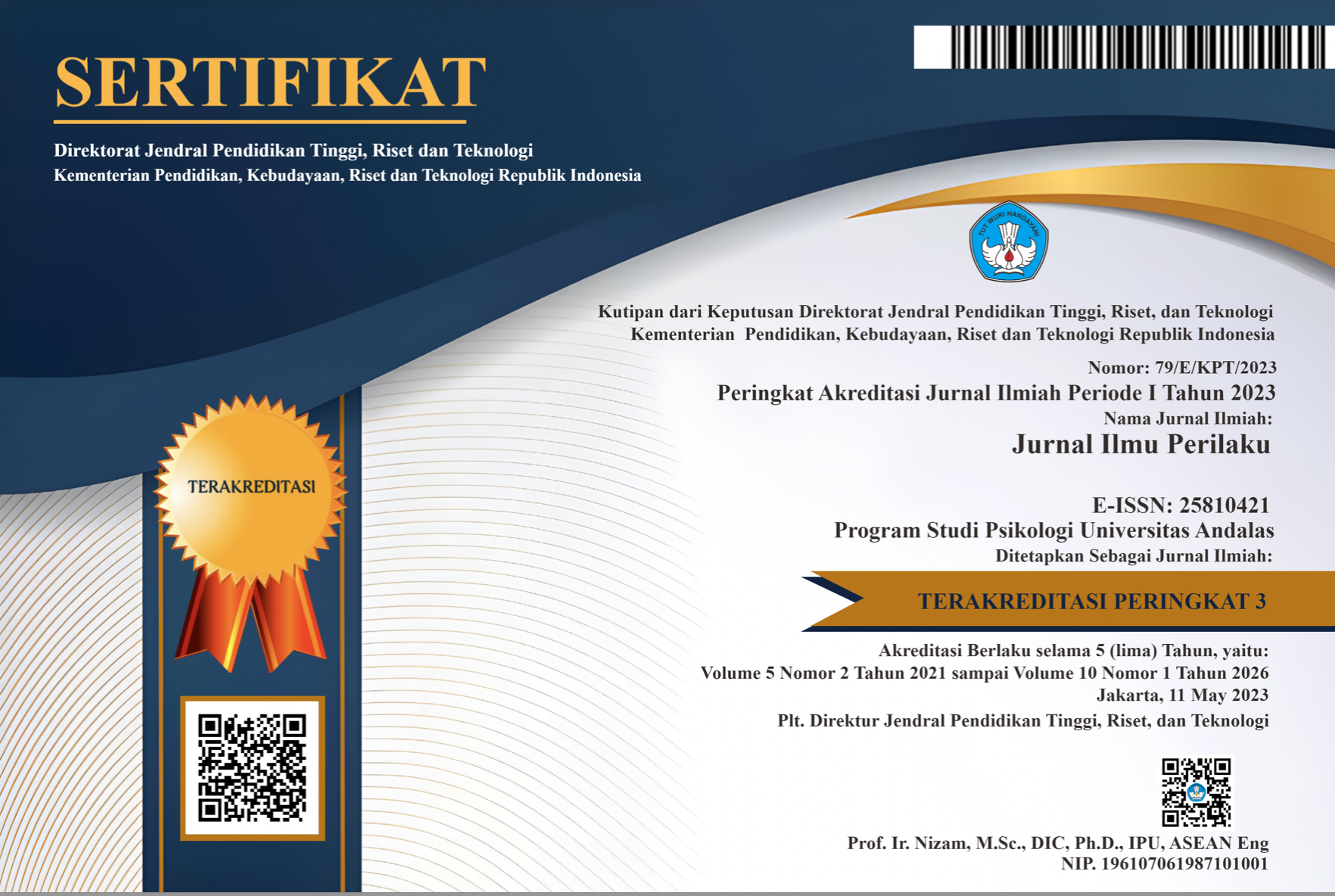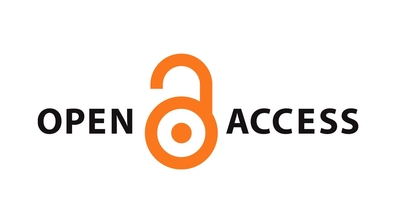Harga, Nilai & Kualitas: Pengambilan Keputusan Membeli Mahasiswa di Jakarta
Abstract
Abstract.
Consumer decision-making styles affect the customers’ decision making. With population that predominantly by teenagers, information on the decision-making style of young customers in Jakarta will greatly help producers and distributors to plan the sales. The purpose of this study was describing the decision-making styles of college students in Jakarta. We hypothesized that Jakarta’s college students’ decision-making styles dominated by hedonist. Data were collected by Consumer Style Inventory (CSI) to determine the decision-making styles of the participants. 284 students from age 18 to 24 years-old were participated in this study. The result showed that our hypothesis was rejected. The decision-making styles of Jakarta’s college students were strongly characterized by brand awareness (85%) and perfectionist (84%). Further details are discussed.
Keywords: Consumer decision-making styles; Consumer Style Inventory (CSI); College students; Jakarta.
Downloads
References
Apsari, R., Pardosi, R. R., Alifah, S., Windiyarti, N., Nurhayati, Pamujiyanti, T., … Ningsih, D. S. (2016). Welfare Indicator of DKI Jakarta 2016. Badan Pusat Statistik Provinsi DKI Jakarta. Jakarta: Badan Pusat Statistik Provinsi DKI Jakarta. Retrieved from https://jakarta.bps.go.id/index.php/publikasi/index?Publikasi%5BtahunJudul%5D=2016&Publikasi%5BkataKunci%5D=&yt0=Tampilkan
Badan Pusat Statistik (BPS) DKI Jakarta. (2015). Data Jumlah Kelompok Usia Tahun 2015. Jakarta. Retrieved from http://data.jakarta.go.id/dataset/db70385d-f9bb-4b49-90f8-04ce155d23f3/resource/2a6f2eff-0abb-4c78-bff1-534188757645/download/Data-Jumlah-Kelompok-Usia-Tahun-2015.csv
Bae, S., & Miller, J. (2009). Consumer Decision-Making Styles For Sport Apparel: Gender Comparisons Between College Consumers. Journal of Research, 4(1), 40–45. Retrieved from http://72.41.71.98/files/published/ftru52p5244h38.pdf
Bae, S., Pyun, D., & Lee, S. (2010). Consumer Decision-Making Styles for Singaporean College Consumers: An Exploratory Study. ICHPER-SD Journal of Research, 5(2), 70–76. Retrieved from https://files.eric.ed.gov/fulltext/EJ913335.pdf
Brougham, R. R., Jacobs-Lawson, J. M., Hershey, D. A., & Trujillo, K. M. (2011). Who pays your debt? An important question for understanding compulsive buying among American college students. International Journal of Consumer Studies, 35(1), 79–85. http://doi.org/10.1111/j.1470-6431.2010.00923.x
Darden, W., & Ashton, D. (1974). Psychographic profiles of patronage preference groups. Journal of Retailing, 50(4), 99–112. Retrieved from http://web.b.ebscohost.com/ehost/pdfviewer/pdfviewer?vid=0&sid=c152c1d0-9168-4f62-b8b0-607de3ba530b%40sessionmgr104
Dash, M. K., & Kumar, A. (2014). Electronic Consumer Style Inventory : Factor Exploration and Multi-Comparison Analysis. Asian Academy of Management Journal, 19(2), 43–65. Retrieved from http://web.usm.my/aamj/19022014/Art 3(43-66).pdf
Durvasula, S., Lysonski, S., & Andrews, J. C. (1993). Cross-cultural generalizability of a scale for profiling consumers’ decision-making styles. The Journal of Consumer Affairs, 27(1), 55–65. http://doi.org/10.1111/j.1745-6606.1993.tb00737.x
Fadhil, H. (2016, December 14). Plt Gubernur DKI: RPTRA Instrumen Membangun Manusia Indonesia yang Berkualitas. DetikNews. Jakarta. Retrieved from https://news.detik.com/berita/3370736/plt-gubernur-dki-rptra-instrumen-membangun-manusia-indonesia-yang-berkualitas
Hafizah, I. (2012, November 8). Jumlah Mall di Jakarta Bertambah Lagi - Kompasiana. Kompasiana. Jakarta. Retrieved from http://www.kompasiana.com/isnahafizah/jumlah-mall-di-jakarta-bertambah-lagi_5518f7b6a333110d13b6595e
Hahn, K. H., & Ma, Y. J. (2011). Self-concept and Decision-making Styles : A Comparison between Young Korean and American Consumers. Research Journal of Textile and Apparel, 15(1), 81–97.
Kusuma, D. F., & Septarini, B. G. (2013). Pengaruh Orientasi Belanja Terhadap Intensi Pembelian Produk Pakaian Secara Online Pada Penggunaonline Shop. Jurnal Psikologi Industri Dan Organisasi, 02(1), 1–10.
Kwan, C. Y., Yeung, K. W., & Au, K. F. (2004). Decision-Making Behaviour Towards Casual Wear Buying : A Study of Young Consumers in Mainland China. Journal of Management, 1(1), 1–10. Retrieved from http://academyofworldbusiness.com/assets/jomawbr/Article_1.pdf
Lastovicka, J. L. (1982). On the Validation of Lifestyle Traits: A Review and Illustration. Journal of Marketing Research, 19(1), 126–138. http://doi.org/10.2307/3151537
Lubis, H. U. (2016, December 26). Arus Lalu Lintas Sekitar Bundaran HI Dipadati Kendaraan. DetikNews. Jakarta. Retrieved from https://news.detik.com/berita/3380808/arus-lalu-lintas-sekitar-bundaran-hi-dipadati-kendaraan
Lysonski, S., & Durvasula, S. (2013). Consumer decision making styles in retailing: evolution of mindsets and psychological impacts. Journal of Consumer Marketing, 30(1), 75–87. http://doi.org/10.1108/07363761311290858
Lysonski, S., Durvasula, S., & Zotos, Y. (1996). Consumer decision-making styles: a multi-country investigation. European Journal of Marketing, 30(12), 10–21. Retrieved from http://dx.doi.org/10.1108/03090569610153273
MARS Indonesia. (2015). STUDI PERILAKU BELANJA REMAJA INDONESIA 2015 (2nd ed.). Jakarta: MARS Indonesia. Retrieved from http://www.marsindonesia.com/products/business-reports/studi-perilaku-belanja-remaja-indonesia-2014
Pate, S. S., & Adams, M. (2013). The Influence of Social Networking Sites on Buying Behaviors of Millennials. Atlantic Marketing Journal, 2(1), 2165–3879. Retrieved from https://digitalcommons.kennesaw.edu/amj%0Ahttps://digitalcommons.kennesaw.edu/amj/vol2/iss1/7
Peter, J. P., & Olson, J. C. (2010). Consumer Behavior & Marketing Strategy. McGraw-Hill Irwin (9th ed.). New York: Paul Ducham.
Ramadi, E. (2016, December 23). Ini Cara Para Suami untuk Usir Stres pada Istrinya. DetikHealth. Jakarta. Retrieved from http://health.detik.com/read/2016/12/23/092640/3378845/764/ini-cara-para-suami-untuk-usir-stres-pada-istrinya
Riduwan. (2013). Metode & Teknik Menyusun Tesis. Bandung: Alfabeta.
Schiffman, L. G., & Kanuk, L. L. (2007). Consumer behavior (9th ed.). Upper Saddle River: Prantice-Hall.
Sproles, G. B. (1985). From Perfectionism to Fadism: Measuring Consumers’ Decision-Making Styles. In K. P. Schnittgrund (Ed.), Proceedings of American Council on Consumer Interests (pp. 79–85). Columbia, MO: American Council on Consumer Interests (ACCI). Retrieved from http://www.consumerinterests.org/assets/docs/CIA/CIA1985/sproles pp 79-85.pdf
Sproles, G. B., & Kendall, E. L. (1986). A methodology for profiling costumers’ decision-making styles. Journal of Consumer Affairs, 20(2), 267–279.
Sutriyanto, E. (2014). Remaja Indonesia Makin Royal Belanja Via Online - Tribunnews. Tribun News. Jakarta. Retrieved from http://www.tribunnews.com/lifestyle/2014/01/28/remaja-indonesia-makin-royal-belanja-via-online
Teddlie, C., & Yu, F. (2007). Mixed Methods Sampling: A Typology With Examples. Journal of Mixed Methods Research, 1(1), 77–100. http://doi.org/10.1177/2345678906292430
Walsh, G., Mitchell, V.-W., & Hennig-Thurau, T. (2001). German Consumer Decision-Making Styles. Journal of Consumer Affairs, 35(1), 73–95. http://doi.org/10.1111/j.1745-6606.2001.tb00103.x
Wang, J., & Xiao, J. J. (2009). Buying behavior, social support and credit card indebtedness of college students. International Journal of Consumer Studies, 33(1), 2–10. http://doi.org/10.1111/j.1470-6431.2008.00719.x
Wanninayake, B. W. M. C. (2014). Consumer Decision-Making Styles and Local Brand Biasness: Exploration in the Czech Republic. Journal of Competitiveness, 6(1), 3–17. http://doi.org/10.7441/joc.2014.01.01
Yalkin, C., & Rosenbaum-Elliott, R. (2014). Talking Fashion in Female Friendship Groups: Negotiating the Necessary Marketplace Skills and Knowledge. Journal of Consumer Policy, 37(2), 301–331. http://doi.org/10.1007/s10603-014-9260-6
Zhou, J. X., Arnold, M. J., Pereira, A., & Yu, J. (2010). Chinese consumer decision-making styles: A comparison between the coastal and inland regions. Journal of Business Research, 63(1), 45–51. http://doi.org/10.1016/j.jbusres.2009.01.010

This work is licensed under a Creative Commons Attribution-NonCommercial-ShareAlike 4.0 International License.
The non-commercial use of the article is governed by the Creative Commons Attribution license as currently displayed on Creative Commons Attribution-NonCommercial-ShareAlike 4.0 International License.
JIP's spirit is to disseminate articles published are as free as possible. Under the Creative Commons license, JIP permits users to copy, distribute, display, and perform the work for non-commercial purposes only. Users will also need to attribute authors and JIP on distributing works in the journal.
Please find the rights and licenses in Jurnal Ilmu Perilaku (JIP).
- License
The non-commercial use of the article will be governed by the Creative Commons Attribution license as currently displayed on Creative Commons Attribution-NonCommercial-ShareAlike 4.0 International License.
- Author’s Warranties
The author warrants that the article is original, written by stated author(s), has not been published before, contains no unlawful statements, does not infringe the rights of others, is subject to copyright that is vested exclusively in the author and free of any third party rights, and that any necessary written permissions to quote from other sources have been obtained by the author(s).
- User Rights
JIP's spirit is to disseminate articles published are as free as possible. Under the Creative Commons license, JIP permits users to copy, distribute, display, and perform the work for non-commercial purposes only. Users will also need to attribute authors and JIP on distributing works in the journal.
- Rights of Authors
Authors retain the following rights:
- Copyright, and other proprietary rights relating to the article, such as patent rights,
- The right to use the substance of the article in future own works, including lectures and books,
- The right to reproduce the article for own purposes, provided the copies are not offered for sale,
- The right to self-archive the article.
- Co-Authorship
If the article was jointly prepared by other authors, the signatory of this form warrants that he/she has been authorized by all co-authors to sign this agreement on their behalf, and agrees to inform his/her co-authors of the terms of this agreement.
- Termination
This agreement can be terminated by the author or JIP upon two months’ notice where the other party has materially breached this agreement and failed to remedy such breach within a month of being given the terminating party’s notice requesting such breach to be remedied. No breach or violation of this agreement will cause this agreement or any license granted in it to terminate automatically or affect the definition of JIP.
- Royalties
This agreement entitles the author to no royalties or other fees. To such extent as legally permissible, the author waives his or her right to collect royalties relative to the article in respect of any use of the article by JIP or its sublicensee.
- Miscellaneous
JIP will publish the article (or have it published) in the journal if the article’s editorial process is successfully completed and JIP or its sublicensee has become obligated to have the article published. JIP may conform the article to a style of punctuation, spelling, capitalization, referencing and usage that it deems appropriate. The author acknowledges that the article may be published so that it will be publicly accessible and such access will be free of charge for the readers.










